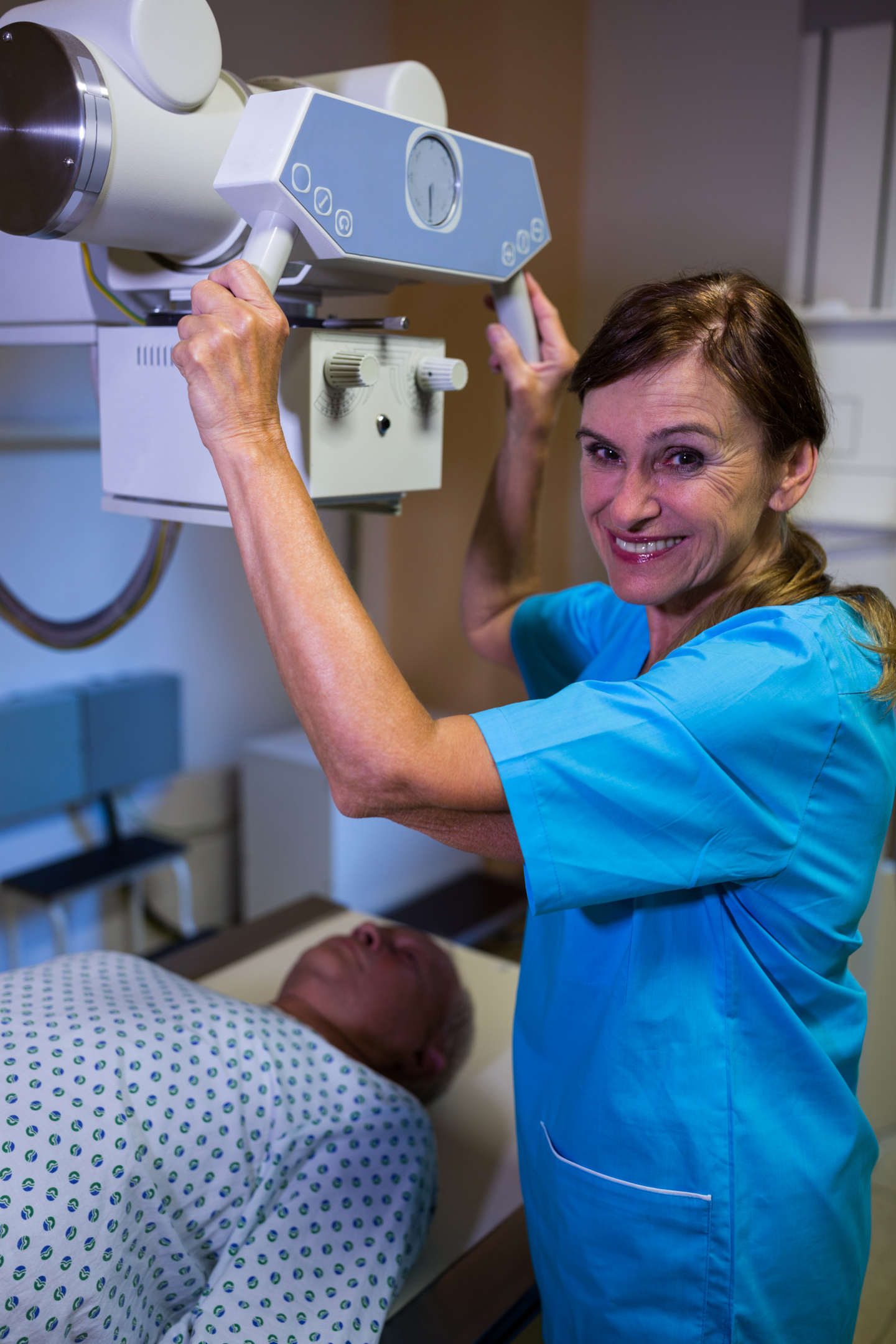How does radiotherapy for prostate cancer work?


Radiotherapy is used to target and destroy prostate cancer cells specifically.

Radiation therapy kills the cancer cells or shrinks the tumours through high-energy particles or radiations. However, the choice of radiotherapy is made after a thorough investigation of the stage and grade of the prostate tumour.
Let's learn about the indications of prostate cancer radiation therapy, various methods and its pros and cons.
However, before going for the treatment of prostate cancer, you need to diagnose it. Our Prostate Cancer Blood Test does this job for you. It detects the prostate-specific antigen (PSA) level in your blood. Click here to get your test kit.
The choice of radiotherapy depends upon various factors. It is the job of an oncologist; however, the following factors are often considered.
It is helpful for low-grade cancer that is limited to the prostate gland. Radiotherapy offers excellent cure rates for such cancers.
It is used as a part of combination therapy (along with hormone therapy) for the prostate tumours that have made slight incursions into the nearby surrounding tissues.
It is excellent for the removal of the leftover tumour in case of an incomplete surgery.
It is used for selective destruction of tumours in case of the advanced tumour and as a part of palliative treatment to help control the symptoms. Palliative care is administered to patients with an advanced stage of cancer to improve their quality of life.
The common types of radiation therapies used to treat prostate cancer are;
External beam radiotherapy
Internal radiation (brachytherapy)
Let's discuss these types one by one.
This method uses a beam from an outside machine called the linear accelerator to target the cancer tissues. This method is effective for earlier stages of cancer or for the palliative care of advanced cases. The radiations used are x-rays, proton beams or the electron beams. All these radiations have high energy.

The process is painless and works just like getting an x-ray. You will need to get treatments for several days per week for months, as recommended by the oncologist. The therapy lasts only for minutes. A new generation of machined has entered the market, allowing a better focus on the target tissues with little exposure to the surrounding normal tissues.
Various variants of this technique are;
Three-dimensional conformal radiation therapy (3D-CRT)
This technique uses computers to map and target the tumour from various angles and directions. A three-dimensional image of the tumour is generated, which allows a more precise radiation dose. In contrast, the earlier technique measured the tumours' length and width, resulting in more exposure of nearby tissues to the radiation.
Various machines based on this technique are available in the market.
Stereotactic body radiation therapy (SBRT)
It uses an image-guided technique to deliver a high dose of precise radiation to the target tissues. Its ability to provide large doses of radiations in a short time shortens the treatment duration. However, side effects can occur. A typical procedure involves the immobilisation of the patient, localisation of the target tissues and the use of tracking software to deliver the precise radiation dose.
Intensity-modulated radiation therapy (IMRT)
It is the most common external beam radiotherapy technique used for prostate cancer. It uses computer-guided machines to deliver the radiation. Its various variants are available in the market, allowing oncologists to reduce exposure to normal tissues while providing high doses at the target.
Proton beam radiotherapy (PBR)
This technique used a proton beam instead of an x-ray, as the protein beam is more focused and delivers energy to the target tissues without damaging the normal tissues. In contrast to the electron, the proton is positively charged. Thus proton beam therapy can provide sufficient energy to the target tissues.
This method is also known as 'interstitial radiotherapy' or 'seed implantation radiotherapy'. It used tiny 'seeds' or 'pellets' of the radioactive material to deliver the radiation. Each seed or pellet is only the size of a small grain and is implanted into the cancerous tissues, destroying the cancer cells from the inside.
It is very effective for low-grade cancers which are limited to the prostate gland. It should be combined with external therapy for more advanced tumours infiltrating the local tissues. However, it has a higher risk of side effects on the urinary tract, and the seeds are also challenging to transplant at the target sites. Two common variants are available;
Temporary brachytherapy
It is less commonly used and uses higher dose radiations for a short time. The treatment is often given under the supervision of an oncologist and involves using implants, e.g., balloons, catheters or hollow needles, which are inserted into or near the prostate cancer tissues.
The implants are removed after therapy and the process is repeated many times if needed.
Permanent brachytherapy
it uses seeds (around 100 or more, depending upon the need) of a low dose for a higher duration. The implantation of the seeds in guided through an ultrasound machine whose probe is placed inside the rectum.
These are the drugs that are formulated with radioactive materials. These drugs are injected into the blood and travel through the blood to reach the target tissues. This method is used to kill cancer cells that have spread throughout the body, but it is risky and is associated with more pronounced side effects.

Besides being injected, they can also be given by mouth or placed into the target organ directly. The common radioactive elements used in these drugs are radium-223 chloride (e.g., injection Xofigo), Samarium-153 lexidronam (Quadramet), Strontium-89 chloride (injection Metastron) etc.
Radiotherapy has various advantages and disadvantages. The oncologist will weigh them against each other to decide the best course for you.
Prostate cancer radiotherapy offers the following advantages;
It allows you to get rid of a localised low-grade cancer completely.
It is painless when used in the correct positions.
It is simple and takes, at the most, 10 minutes. However, some more time will be used to prepare the patient.
It can be done for patients who are unfit for surgery due to any reason.
It can be carried out with routine life activities and doesn't need hospitalisation.
However, cancer treatment through radiotherapy is risky and needs caution. The common issues are;
Radiotherapy can damage the surrounding tissues if it is not done correctly. It not only becomes difficult to eliminate cancer afterwards, but sometimes surgery also becomes impossible.
An improperly carried out therapy will increase the risk of acquiring other cancers. However, it is not so common.
The effects will be visible after some time.
Some side effects are too repulsive, e.g., fatigue, tiredness, erectile dysfunction, and urinary and bowel incontinence. However, these side effects can be managed.
The process can be difficult and inconvenient for some people as it often results in bowel or bladder inconsistency.
You will not be hospitalised and need to visit the clinic regularly, which can be difficult.
Radiation therapy for prostate cancer is very common for the treatment of localised as well as metastatic prostate cancer. Various methods and corresponding machines are available in the market. It is the doctor's job to choose the best according to cancer's clinical condition and facilitate managing the side effects.

You need to regularly monitor your health and identify any signs of disease well in time. Our Wellman Test is excellent for the job as it detects the levels of various parameters related to the general health of men. Click here to proceed.
To consult our health experts for guidance, click here.
Plus get the inside scoop on our latest content and updates in our monthly newsletter.